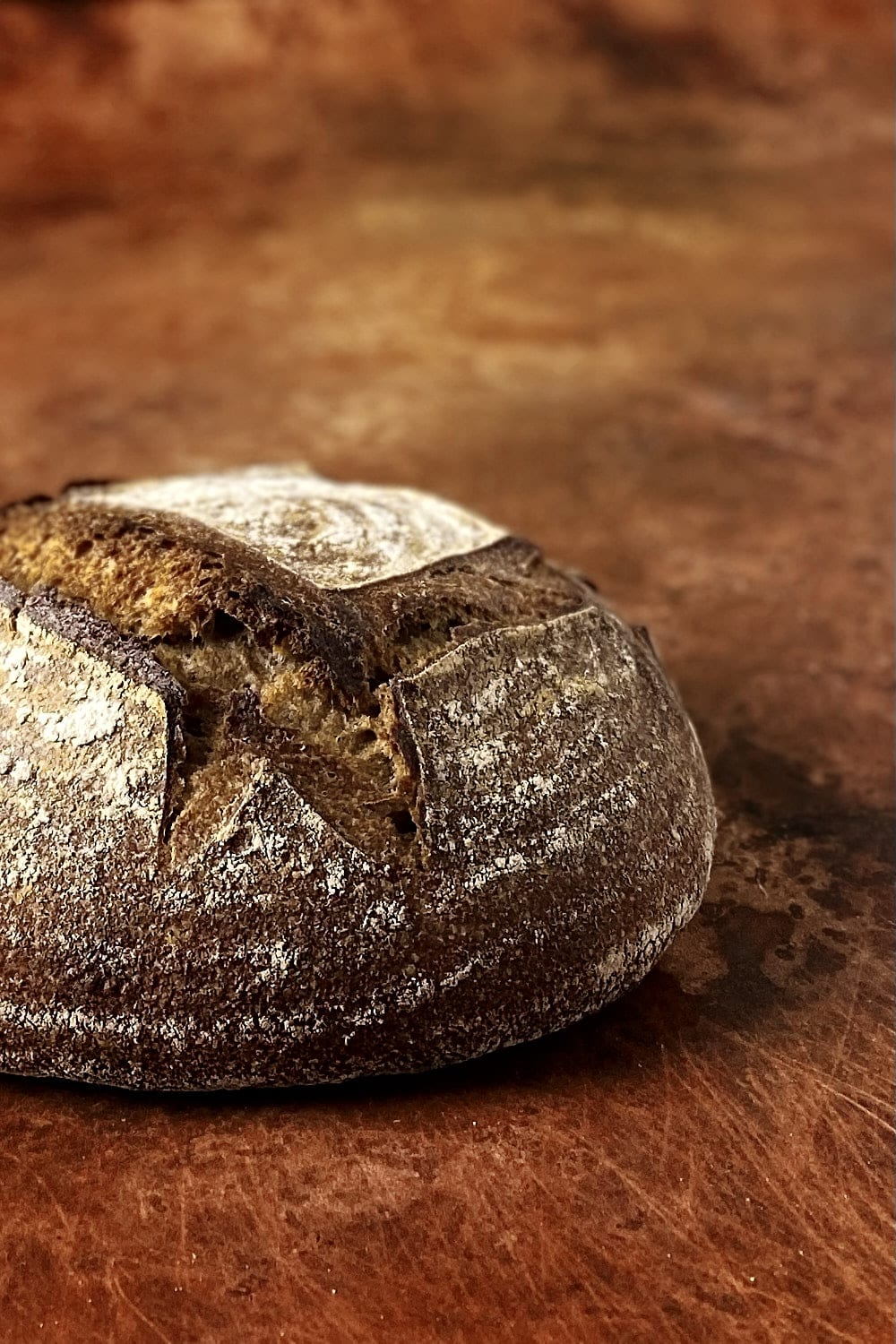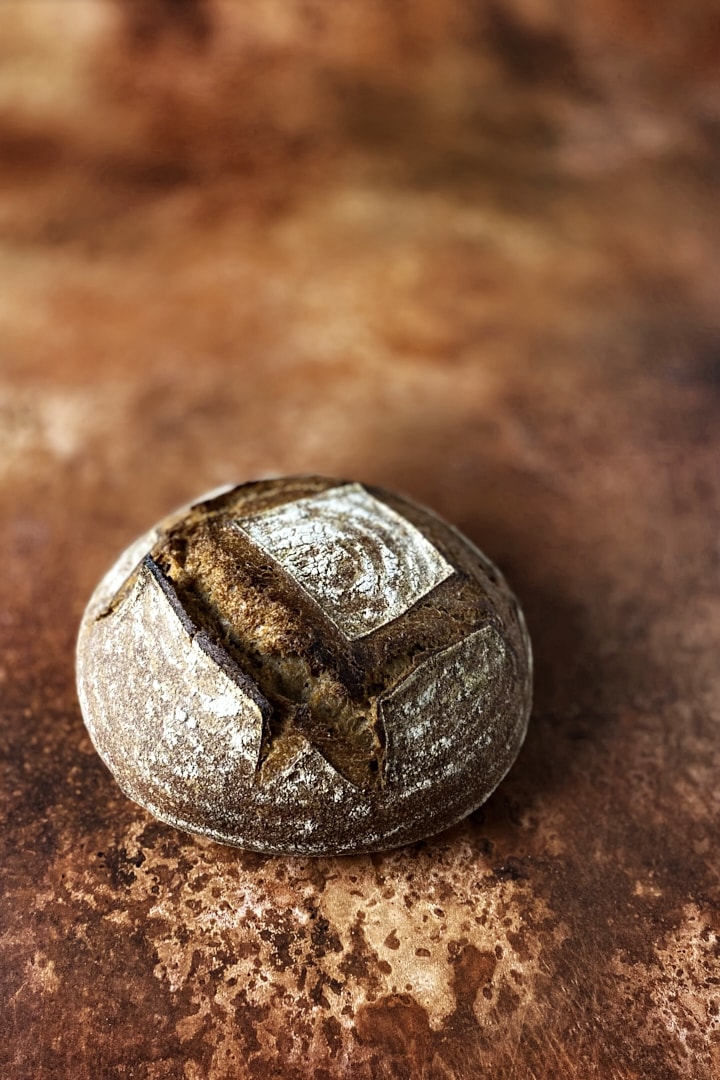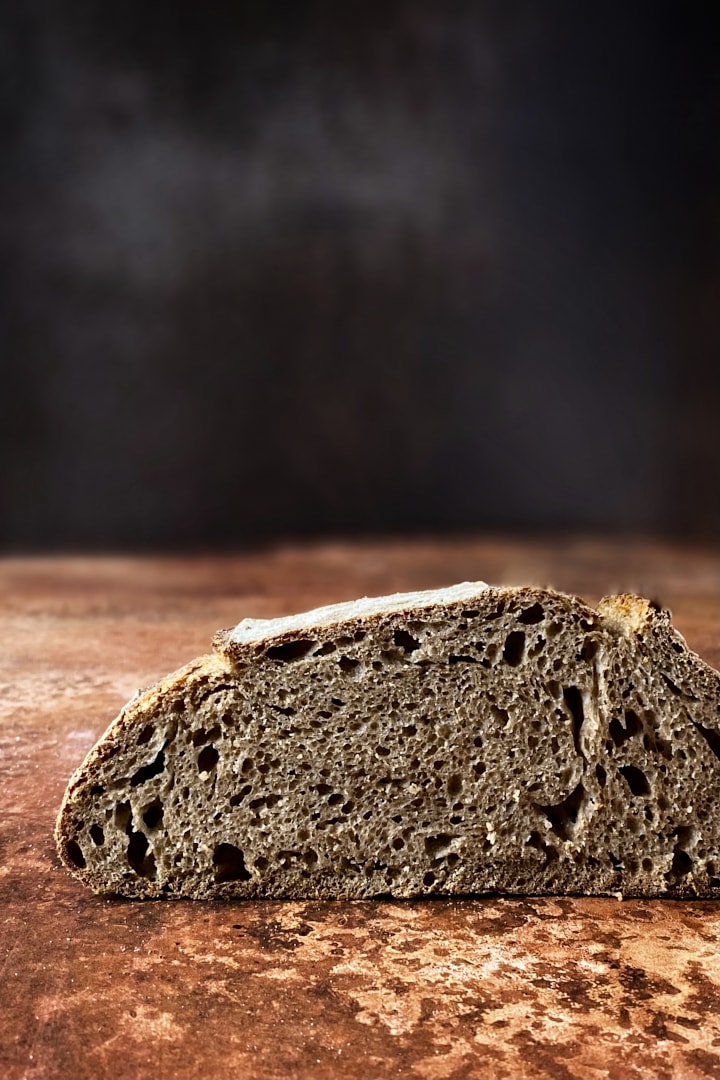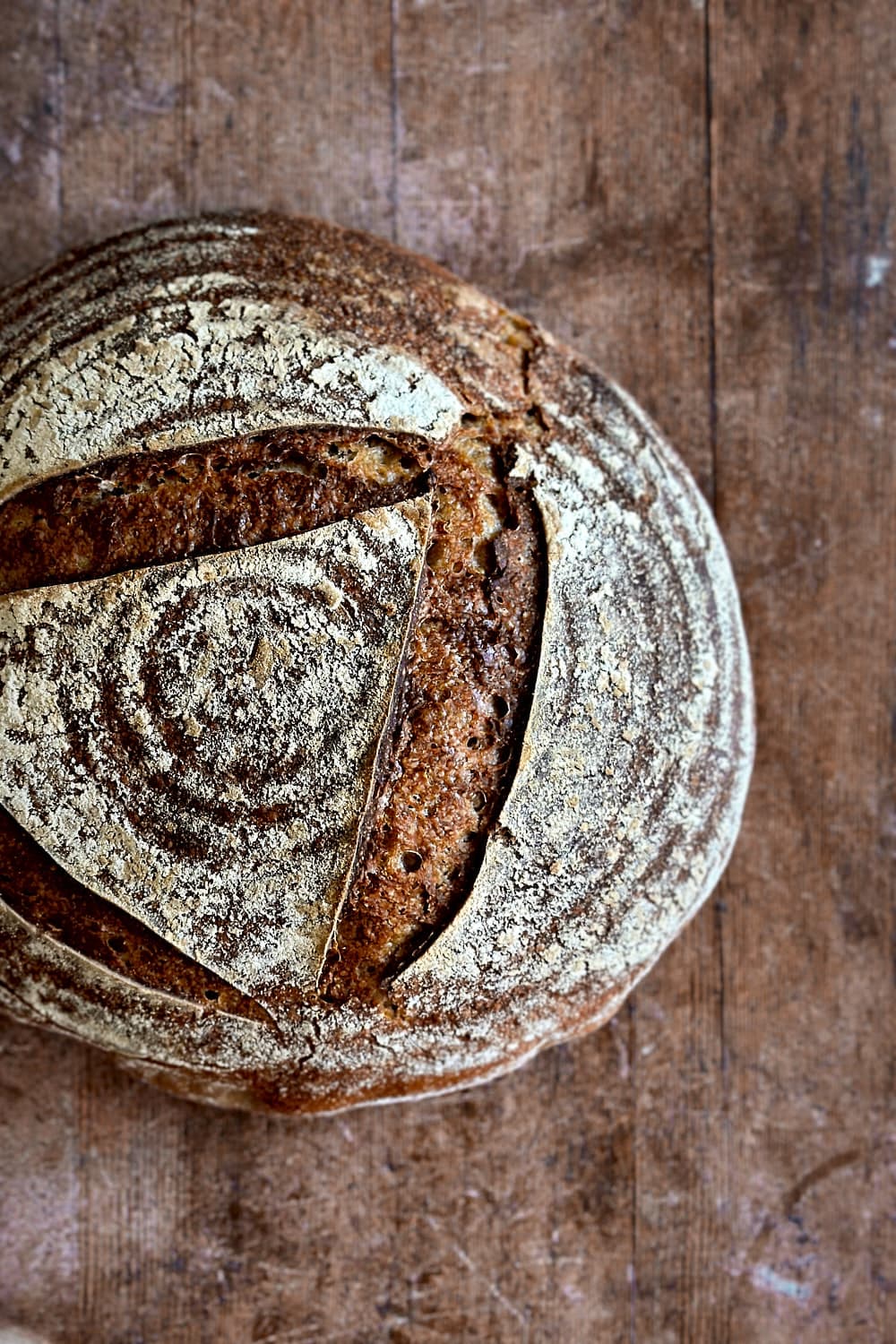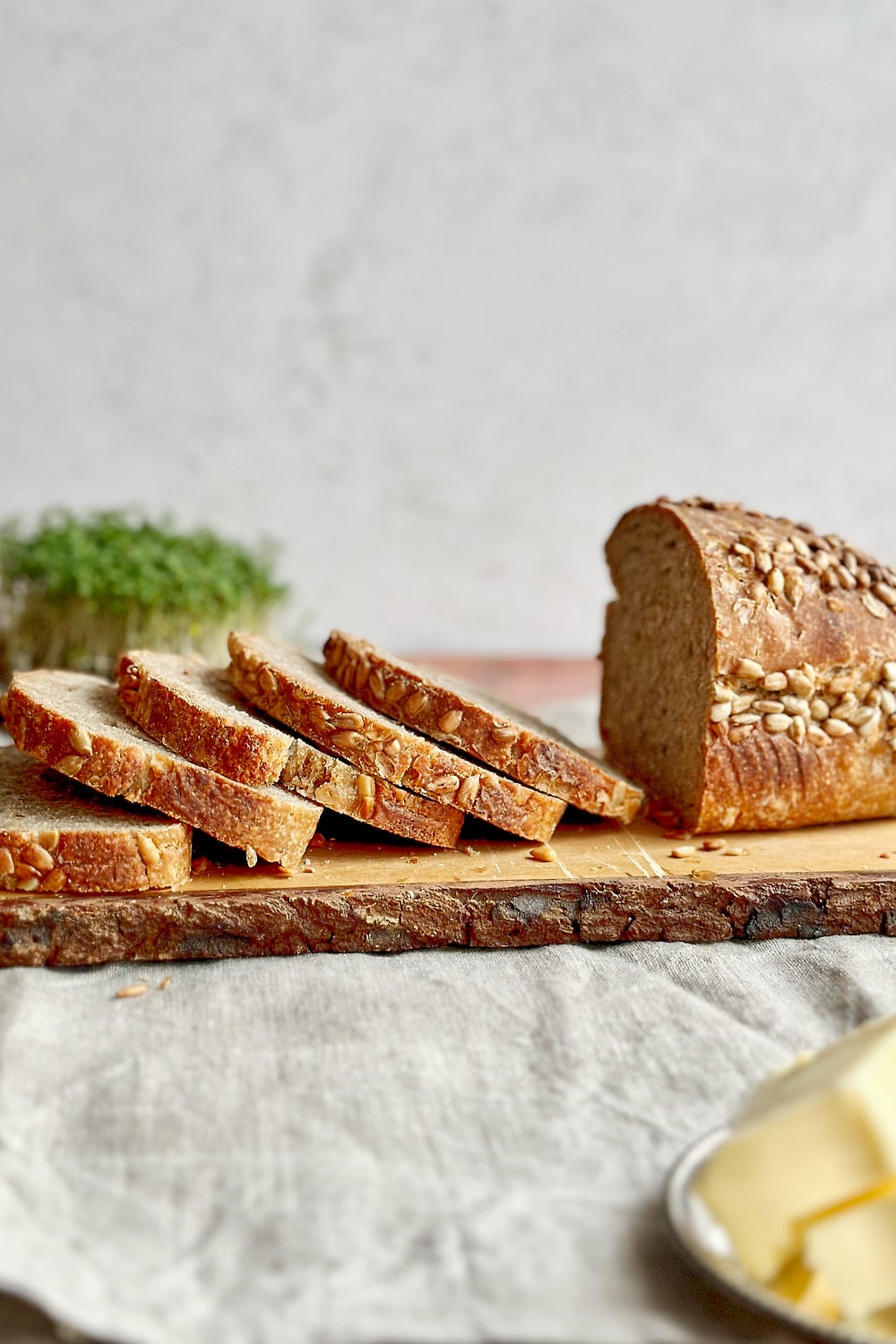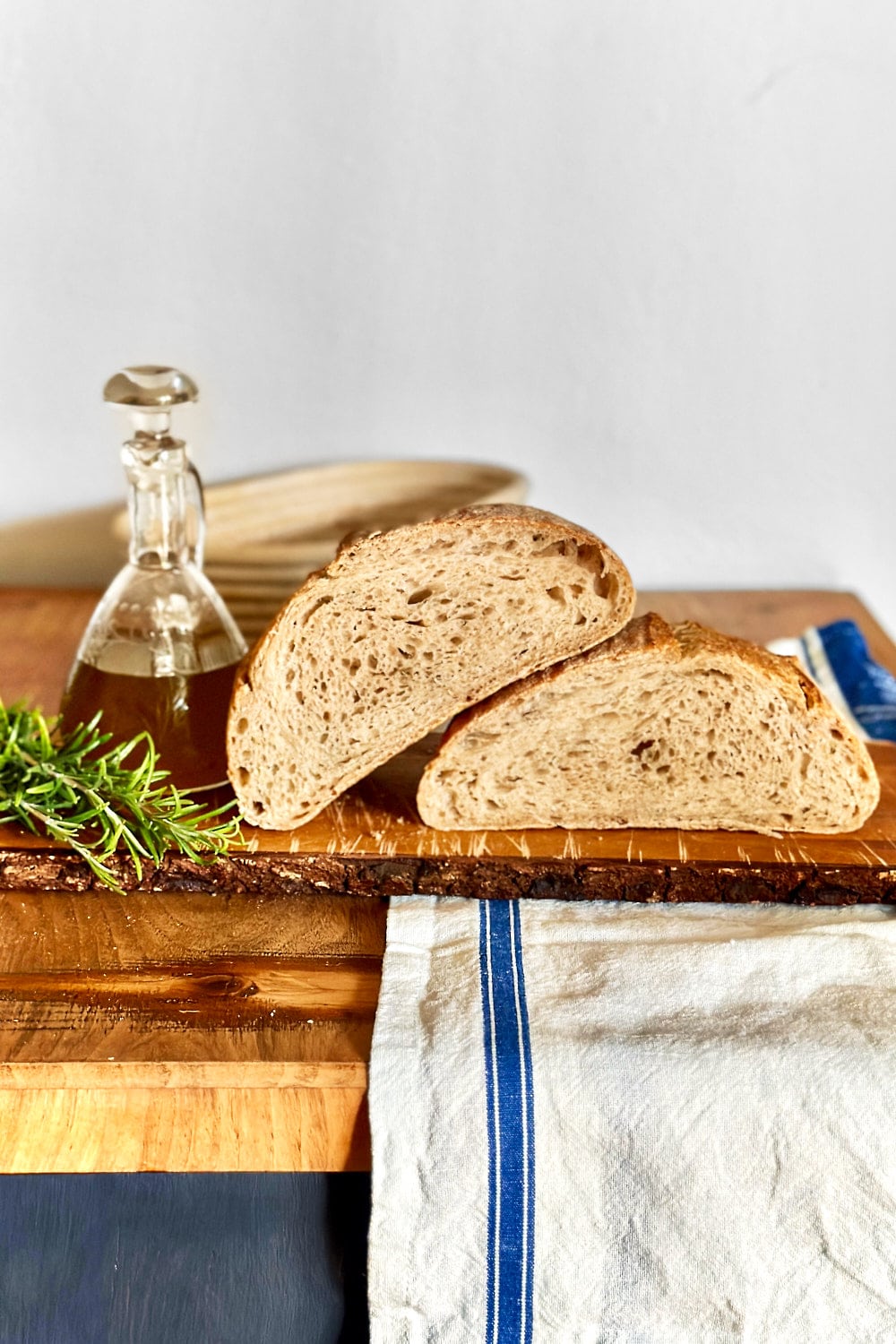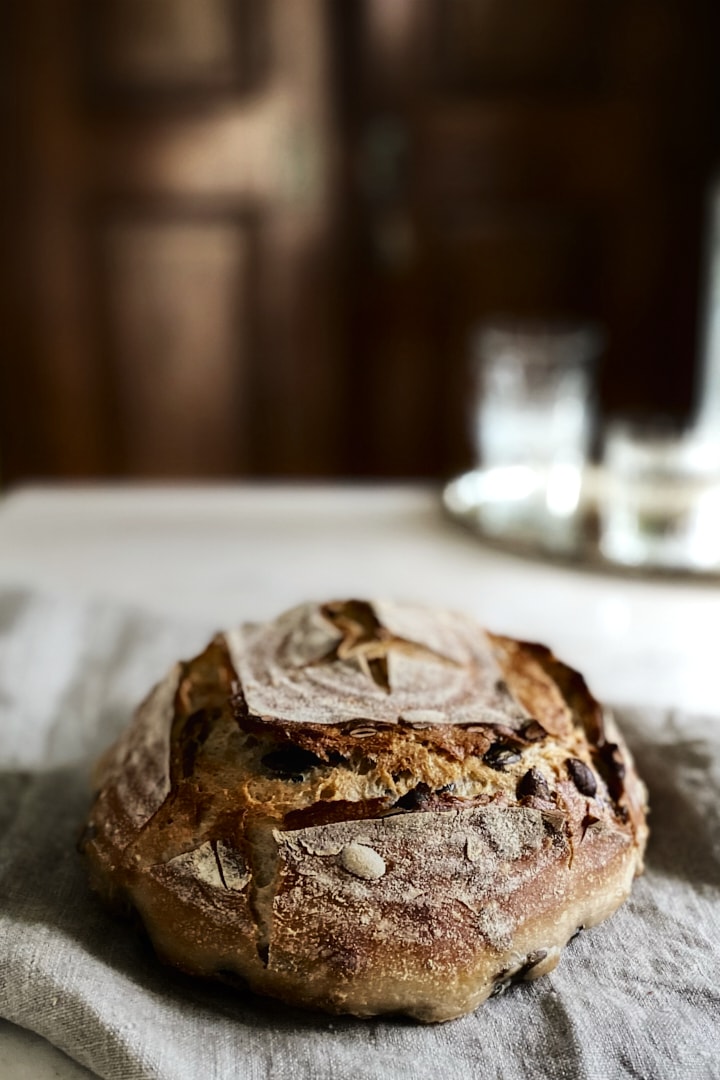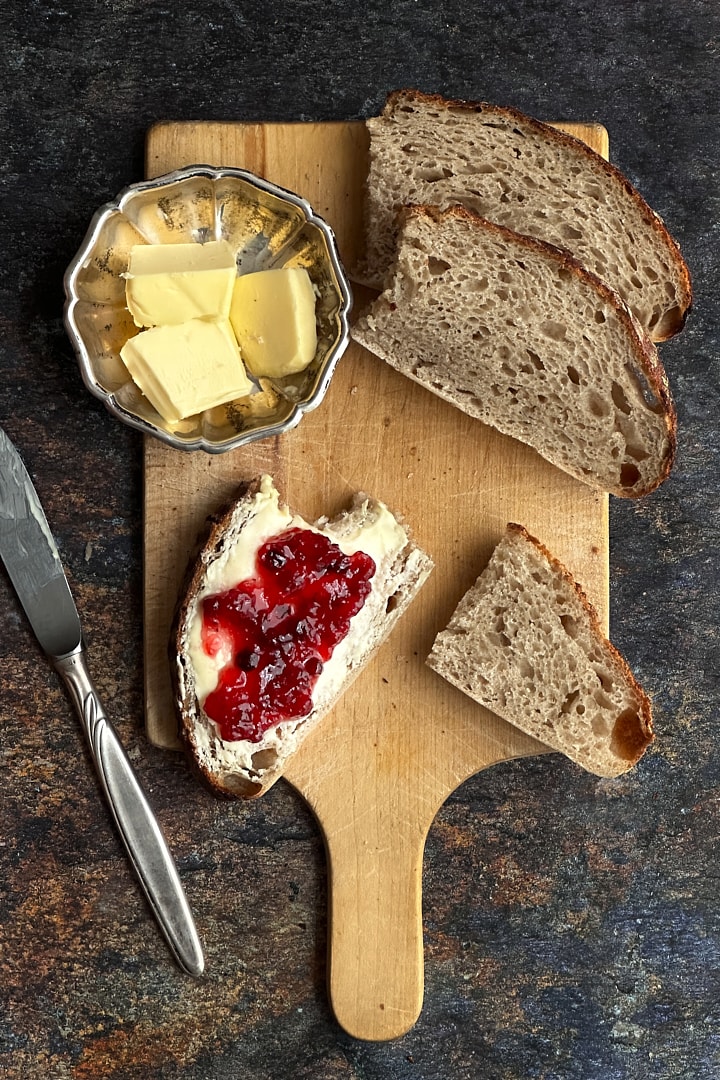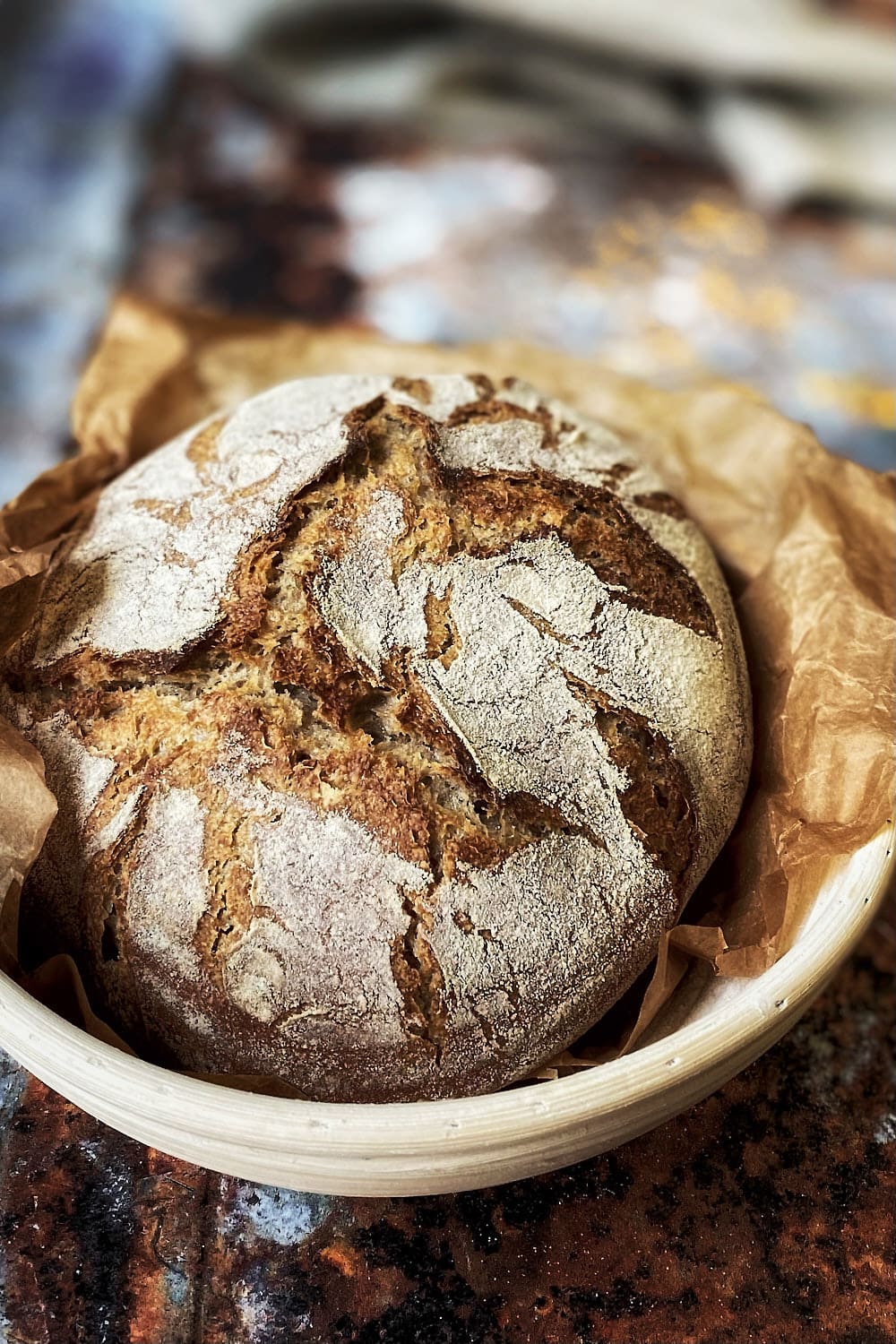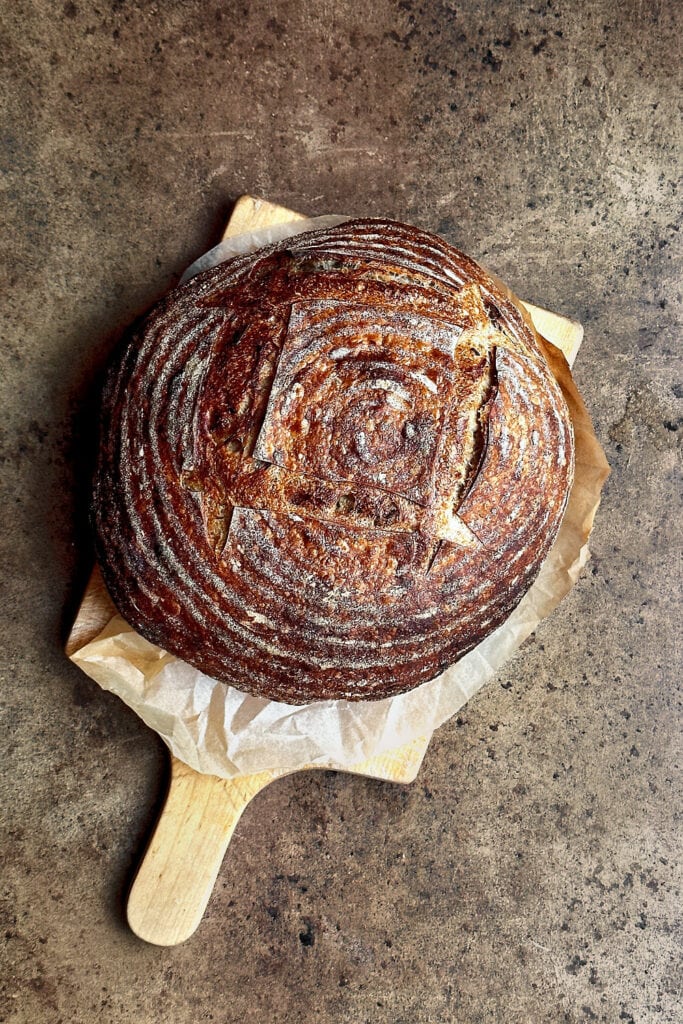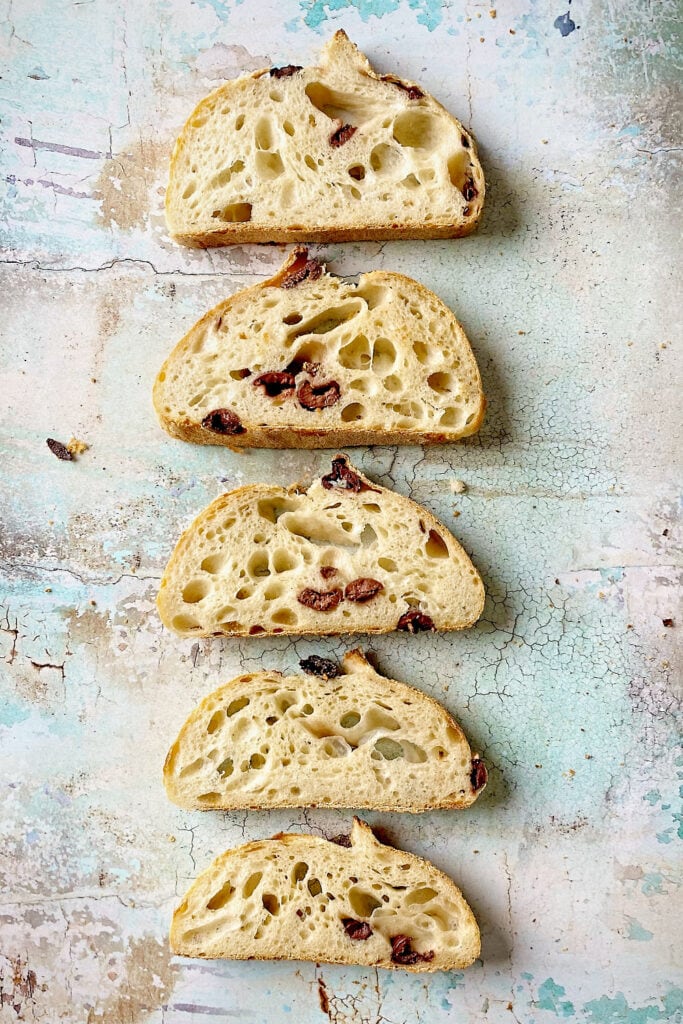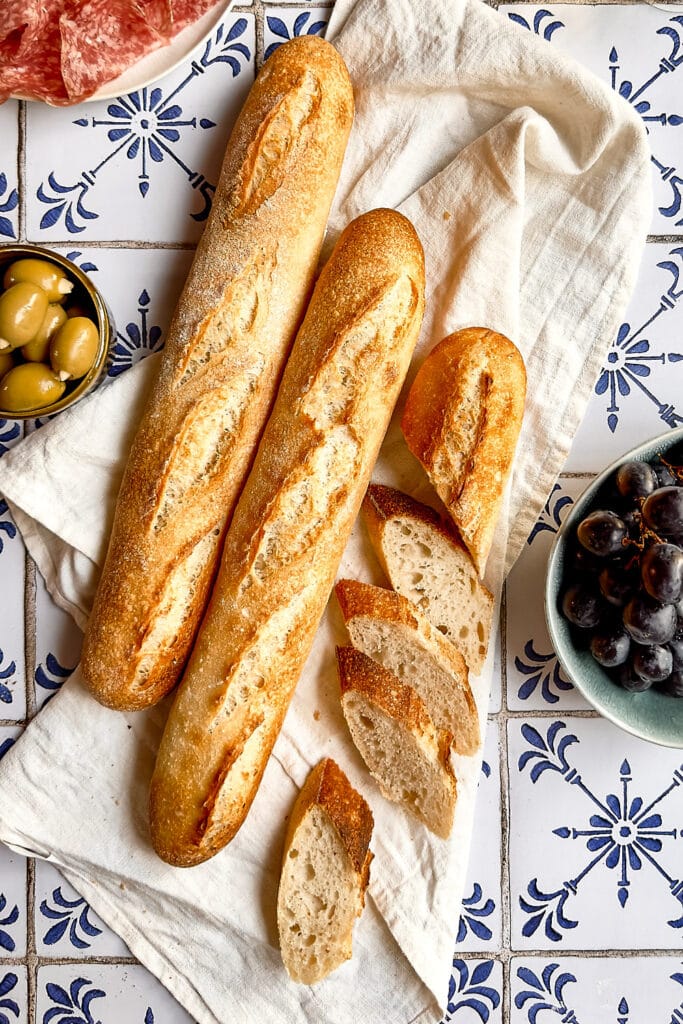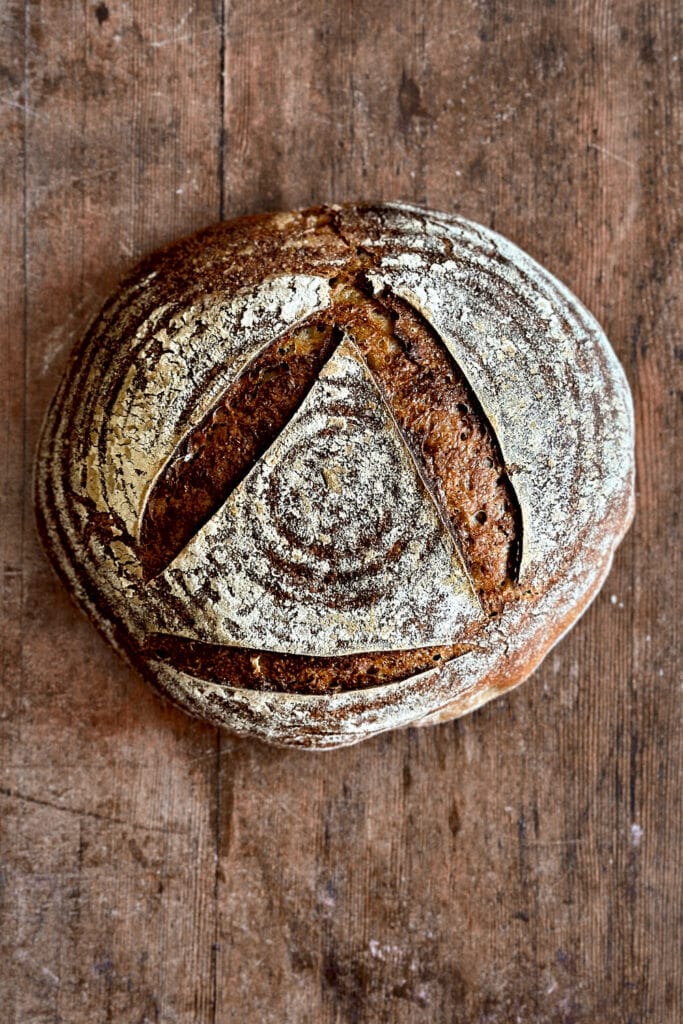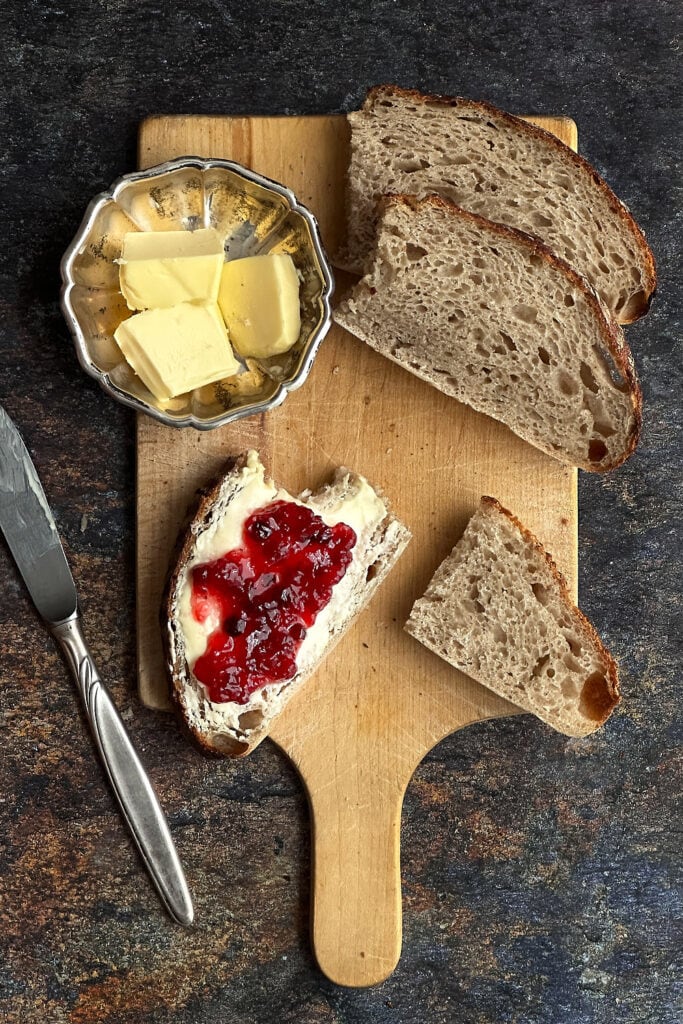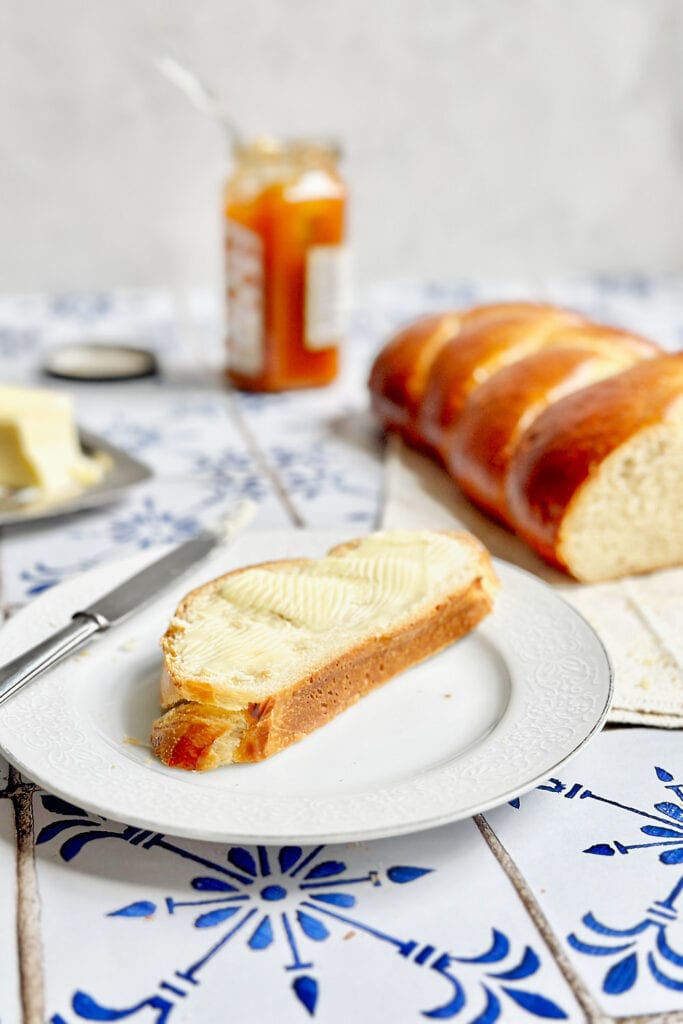Dark Whole Wheat Sourdough Bread
This dark and nutritious whole wheat sourdough bread is made of purely whole wheat flour, water, salt, and leaven. The result is a rustic and flavorful loaf with a nutty aroma and a soft and moist crumb.
Note: For this recipe, you need a sourdough starter.
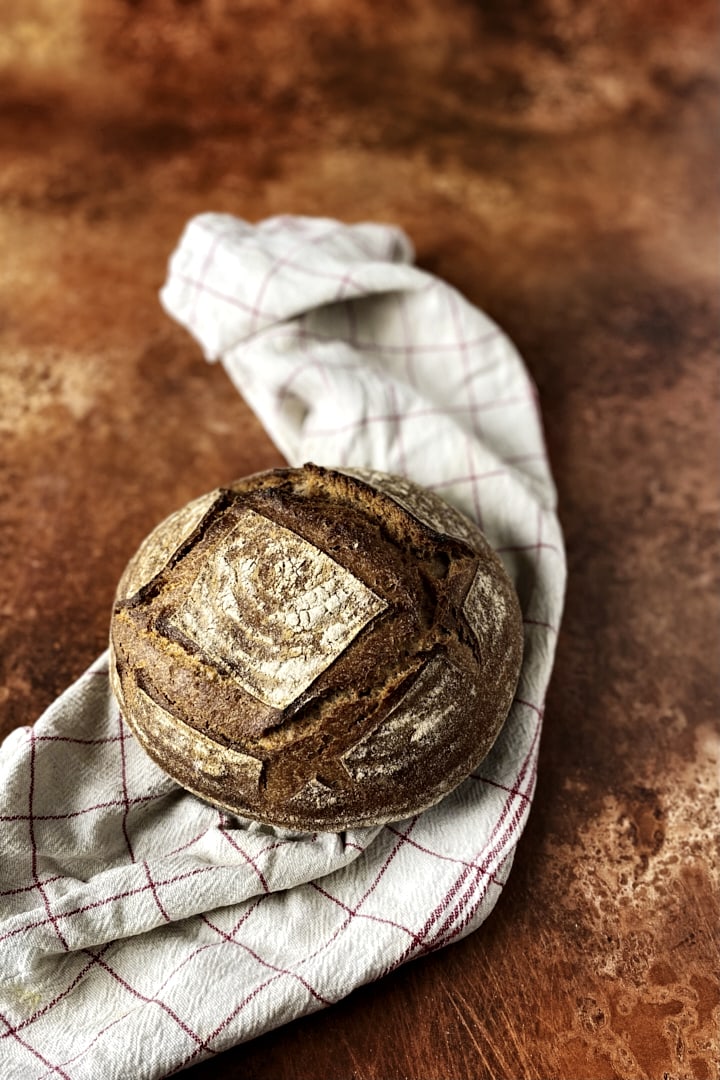
Ingredients and Tools You’ll Need
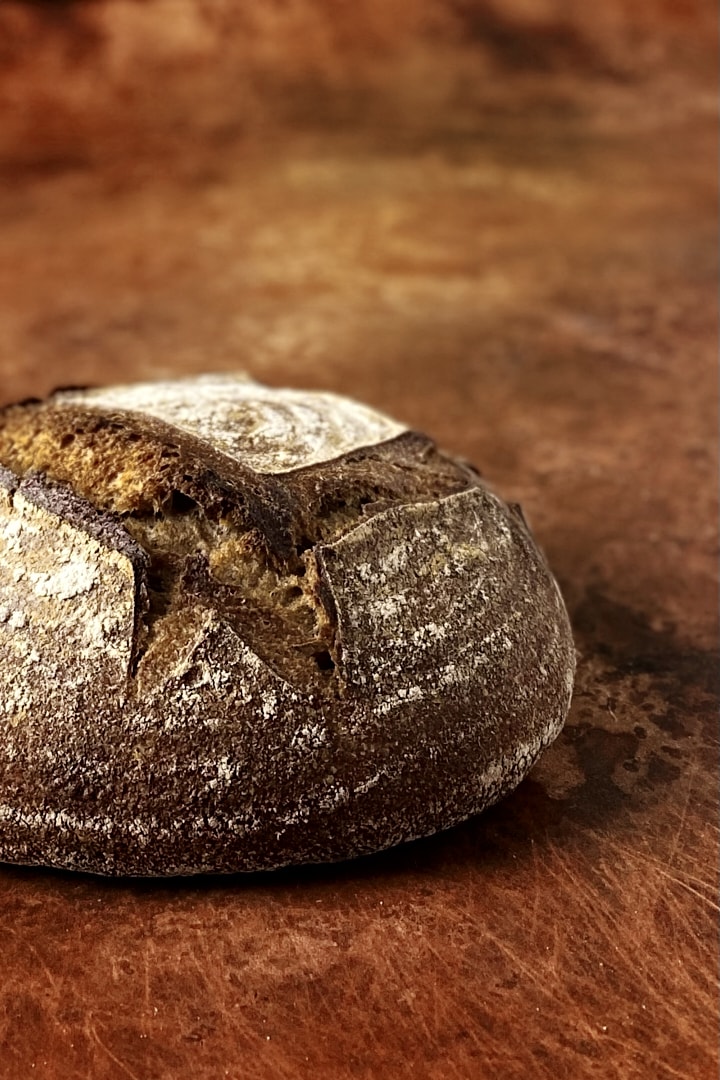
Step-by-Step Instructions
Step 1
In the morning, prepare your leaven: Mix the sourdough starter with lukewarm water and flour and let it rest in a warm spot (around 28 degrees Celsius) for 4 hours. It’s ready to use when it has doubled or tripled in size, looks bubbly and still has a slightly domed top.
Step 2
After mixing the leaven, you can start the autolyse: In a mixing bowl, combine the whole grain flour and warm water and make sure that there are no dry patches of flour left. Cover with a tea towel and let it sit on your counter until the leaven is ready to use. The autolyse will jumpstart the gluten development and allow the flour to fully absorb the water. After the autolyse, the dough will be a lot softer and more elastic without doing any kneading.
Step 3
Prepare the main dough: When the leaven is ready, add it to the autolyse dough and give it a quick knead to bring everything together. Add the salt and dimple it into the dough with your fingers. Then, perform a few rounds of the slap & fold technique to build dough strength, about 2-5 minutes. After slapping & folding, the dough should feel smooth and retain its shape on the counter without spreading out flat immediately.
Step 4
For the bulk fermentation, place the dough in a lightly oiled mixing bowl, cover with a damp tea towel and let it rise in a warm spot (28° C). Perform a few rounds of coil folds in 45-60 minute intervals to build strength and elasticity. After 3-3.5 hours, you should see visible signs of fermentation. At this stage, the dough should have grown in size. You should see lots of smaller air bubbles throughout the dough and some larger ones on the surface. If the dough still looks dense, let it rest longer.
Step 5
Flour the banneton and set aside. Time to pre-shape: Gently turn the dough out onto a lightly floured surface, bring all 4 corners of the dough into the center, overlapping, to form a loose ball. Flip it over and let it rest for 10-20 minutes. During the bench rest, the gluten will relax and the dough will spread out a bit. Flip the dough over again and shape a boule. Transfer the dough to the banneton, cover it with a plastic bag and put it in the fridge overnight.
Step 6
The next morning, pre-heat the oven to 230° C with the Dutch oven inside. Turn the dough out on a piece of parchment paper, score, and bake for 30 minutes inside the dutch-oven. Then, gently lift the bread out of the Dutch oven and finish baking directly on the oven rack for another 10 minutes, or until the crust has a deep brown color. Let the loaf cool down completely before slicing. If you cut into it while it’s still hot, you risk ending up with a gummy and sticky crumb. The wait is worth it!
Tips & Tricks
Common Questions About Whole Wheat Sourdough Bread
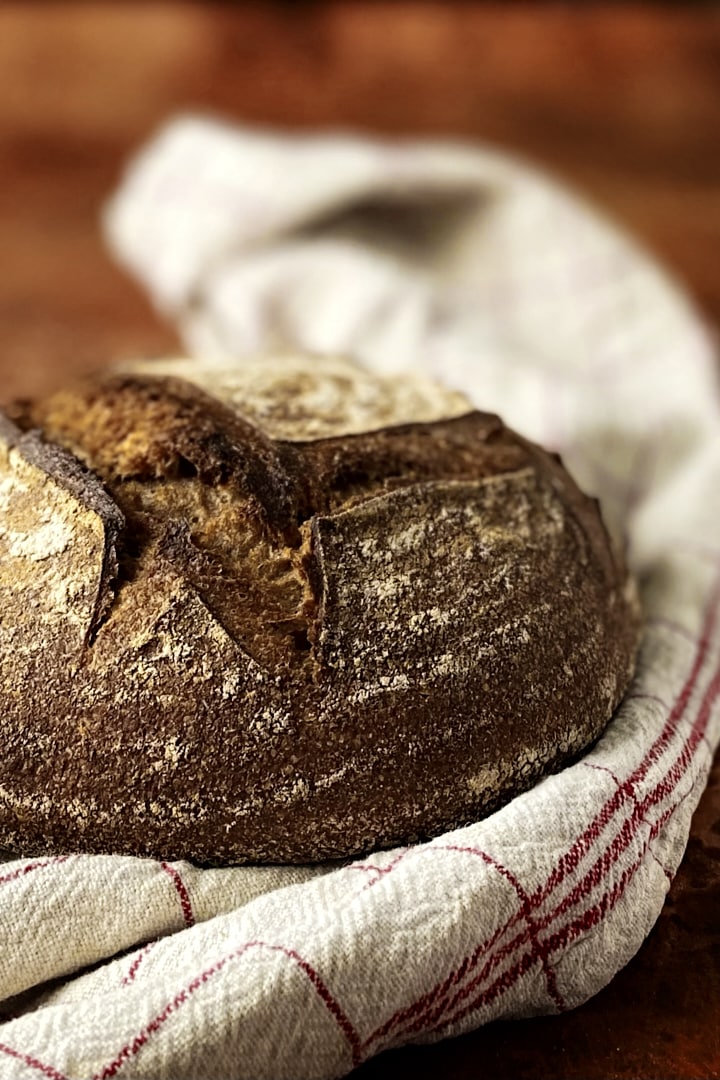
Sample Baking Schedule
Day 1
Day 2
More Sourdough Recipes You May Like:
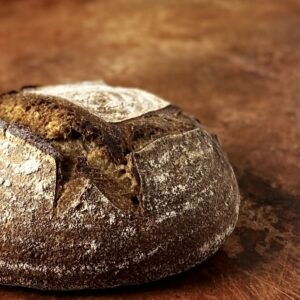
Dark Whole Wheat Sourdough Bread
Equipment
- Digital kitchen scale – for best results, always weigh your ingredients. It's more accurate than measuring by volume.
- Dough whisk or fork – to mix the ingredients.
- bench scraper – to help shape and handle the dough.
- Round banneton – to help the bread retain its shape while proofing.
- Plastic bag or tea towel – to cover the dough while resting. – to cover the dough while resting.
- Bread lame or sharp serrated knife – to score the bread before baking. – to score the bread before baking.
- Dutch oven or large oven-safe stock pot – this creates a steamy environment for the bread to be baked in and results in better oven spring, a softer crumb and a thin and crispy crust.
Ingredients
For the leaven:
- 30 g Sourdough starter – for this recipe, you need a sourdough starter that's strong enough to double in size within 4 -6 hours of feeding.
- 30 g Water – luke warm
- 60 g Flour – you can use whole wheat flour or bread flour
For the autolyse:
- 300 g Whole Wheat Flour
- 255 g Water – warm
For the main dough:
- 75 g Leaven – the remaining leaven will be your starter to keep in the fridge for the next use
- All of the autolyse dough
- 7 g Fine sea salt – fine grain salt is easier to distribute evenly throughout the dough.
Instructions
- In the morning, prepare your leaven: Mix your sourdough starter with lukewarm water and flour and let it rest in a warm spot (around 28 degrees Celsius) for 4 hours. It’s ready to use when it has doubled or tripled in size, looks bubbly and still has a slightly domed top.
- After mixing the leaven, start the autolyse: In a mixing bowl, combine the whole grain flour and warm water. Make sure that there are no dry patches of flour left. Cover with a tea towel and let it sit on your counter until the leaven is ready to use.
- Prepare the main dough: When the leaven is ready, add it to the autolyse dough and give it a quick knead, to bring everything together. Add the salt and dimple it into the dough with your fingers. Then, perform a few rounds of the slap & fold technique to build dough strength, about 2-5 minutes.
- For the bulk fermentation, place the dough in a lightly oiled mixing bowl, cover with a damp tea towel and let it rise in a warm spot (28 degrees Celsius). Perform a round of coil folds in 45-60 minute intervals to build strength and elasticity. After 3-3.5 hours, you should see visible signs of fermentation. At this stage, the dough should have grown in size. You should see lots of smaller air bubbles throughout the dough and some larger ones on the surface. If the dough still looks dense, let it rest longer.
- Flour the banneton and set aside. Time to pre-shape: Gently turn the dough out onto a lightly floured surface, bring all 4 corners of the dough into the center, overlapping, to form a loose ball. Flip it over and let it rest for 20-30 minutes. Flip the dough over again and shape a boule. Transfer the dough to the banneton, cover it with a plastic bag and put it in the fridge overnight.
- The next morning, pre-heat the oven to 230 degrees Celsius with the Dutch oven inside. Turn the dough out on a piece of parchment paper, score, and bake for 30 minutes inside the dutch-oven. Then, gently lift the bread out of the Dutch oven and finish baking directly on the oven rack for another 10 minutes, or until the crust has a deep brown color. Let the loaf cool down completely before slicing. If you cut into it while it's still hot, you risk ending up with a gummy and sticky crumb.

